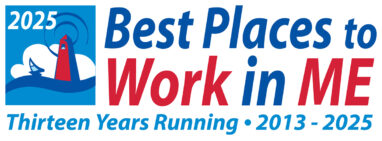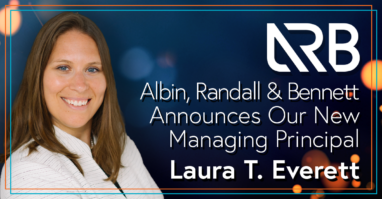Your company’s 401(k) benefit plan is a key incentive for attracting and retaining the employees responsible for maintaining (and increasing) your cash flow, customer relationships, and day-to-day operations. A 401(k) plan does, however, come with major responsibilities. Plan accuracy and compliance are critical for maintaining plan and company success.
A plan sponsor’s fiduciary obligations are extensive, and the Federal Government is increasingly imposing sanctions on plan sponsors whose plans do not meet compliance requirements. Department of Labor penalties can be expensive for the company’s bottom line. Of more immediate concern is the significant time and effort it often takes to resolve even smaller issues. Below, we take a look at a few common 401(k) plan errors and simple steps to avoid or mitigate those errors.
Review your plan document.
Make sure the plan document is reviewed at least annually with your TPA. Tax law is constantly changing and evolving, especially these days. There are various changes in hardship withdrawal requirements, part-time employee eligibility, RMD’s, and other areas that are effective in 2020.
In addition, recent AICPA standards are increasing the procedures for 401(k)s that are subject to financial statement audits. Our article, The Approach of New Auditing Standards for Employee Benefit Plans discusses audit standards for 2020 that reinforce requirements for obtaining necessary documentation needed to support compliant, accurate financial statements and annual reporting.
It is critical to have the right team of advisors to help keep your plan current. However, the sponsor ultimately holds the responsibility for updating the plan document to reflect law changes. Regulatory changes are issued with timelines for adoption requirements, and amendment deadlines don’t always fall on a plan’s year-end. It may be necessary to make interim amendments or to take the appropriate corrective action for any missed amendments before further noncompliance occurs.
Implement the provisions of your plan document in exact fashion.
All plan administration and operations must be performed within the terms of your plan document, so familiarity with the document and how its terms interlink with your company policies is key. Management needs to know how your company’s plan defines eligibility requirements and how the company communicates eligibility to avoid employees missing the opportunity to enroll, make elective deferrals, as applicable, or to receive the defined company match.
The definition of plan compensation is critical, and exactly what counts can be difficult to determine. Fringe benefits are often either incorrectly included or incorrectly excluded from the definition of compensation used to calculate the deferral and the employer match. Bonuses, severance pay, commissions – all need to be assessed one by one for what to include and when. Notably, incorrect application of the plan definition of compensation results in the most common plan errors. If unsure about what is considered compensation based on the definition in your adoption agreement, seek out clarification from an employee benefits professional. If you fail to withhold an applicable deferral, your company will be responsible for making a contribution to participants for any missed company match, 50% of the missing employee deferral, and any missed investment earnings on both. If the error goes back many years, so will the correction.
All of this requires a reading of the adoption agreement to ensure that what is dictated in the agreement meets intentions. This is just as important when it comes to any changes to the adoption agreement.
Stay on top of the plan document terms for distribution eligibility. There are strict regulations governing who can receive them and when. The regulations can be specific to the type of withdrawal. Improper hardship distributions have always required specific considerations and have undergone recent changes, so it is critical that hardship withdrawal provisions in plan documents are current with the law and that distributions are made in accordance with that updated plan document.
If applicable to your plan (SIMPLE 401(k) plans and certain Safe Harbor 401(k)s are exempt), your TPA should be performing an annual assessment to determine if the plan is top-heavy, meaning the total value of the plan accounts of key employees, as of the last day of the prior plan year, is more than 60% of the total value of the plan assets. If your plan is top-heavy, review and follow your TPA’s procedures for required corrections. This review consists of Actual Deferral Percentage (ADP) and Actual Contribution Percentage (ACP) nondiscrimination testing. The TPA often does a good job of leading the sponsor through this; however, it is ultimately the sponsor’s responsibility.
Keep tabs on and comply with deadlines.
Plan deadlines abound and may be internal or external, depending on whether you are complying with your plan document or IRS regulations. Employee elective deferrals and loan repayments, for example, must be deposited timely after being withheld from employees’ pay. For plans with fewer than 100 participants, the DOL provides a safe harbor period of seven business days, but plans with more than 100 participants should generally remit funds to the plan within 3-5 business days after payroll is distributed. Ultimately, the rule is to remit as soon as administratively feasible, so, if your company usually remits sooner, you have established it only takes that amount of time, and you should stick with that lower number of days.
And, of course, the plan’s Form 5500-series return should be filed by the last day of the seventh month following the plan’s year-end (July 31st for calendar year-ends), or by October 15th if the 5500 is extended.
As for contributions, whether for discretionary profit sharing, annual discretionary employer matching, or annual safe harbor, they must be deposited by your tax filing deadline, including extensions. It’s important, however, not to rush profit sharing contributions for individual participant accounts. With the exception of safe harbor contributions, profit sharing contributions should not be deposited to the plan until after the end of the plan year. Since it won’t be clear which participants will meet all eligibility requirements as defined by your plan document and vesting schedule, funding contributions before year end can be tricky.
Take document retention seriously.
A wealth of documentation goes into the creation, maintenance, and annual compliance of a 401(k) plan. It is crucial to follow retention policies that allow for a successful financial statement audit, as well as in preparation for potential IRS and DOL audits. The AICPA Employee Benefit Plan Audit Quality Center (EBPAQC) issued a thorough plan advisory with guidelines and best practices for plan document retention. The short of it is, many documents are required to be retained longer than you would think.
Contact ARB
As new and amended regulations are issued and the potential threat of sanctions imposed on plan sponsors for noncompliance increases, finding and working with a firm who has extensive experience in 401(k) and other benefit plan compliance and is a member of the AICPA Employee Benefit Plan Audit Quality Center is particularly important. ARB’s Employee Benefits Services Group is dedicated to your unique plan needs. Contact us for more information, or for your other accounting and business advisory needs.
by Ben Lord, CPA, CCIFP





